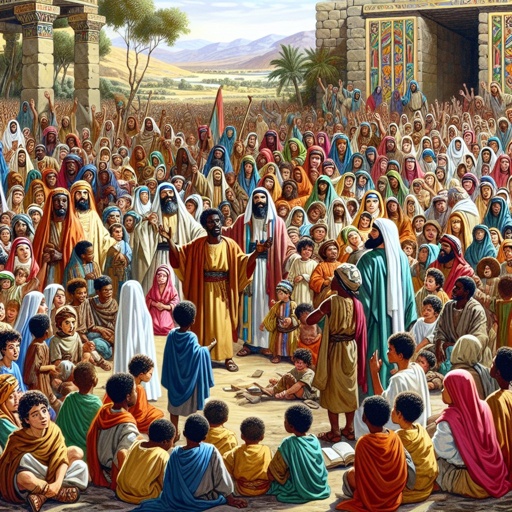Ezra Artwork
"Now in the first year of Cyrus king of Persia, that the word of the LORD by the mouth of Jeremiah might be fulfilled, the LORD stirred up the spirit of Cyrus king of Persia, that he made a proclamation throughout all his kingdom, and put it also in writing, saying," - Ezra 1:1
Explore Ezra through paintings, pictures, drawings, digital art, illustrations, wallpapers, photos, prints & more.

Ezra 7:12 - "Artaxerxes, king of kings, unto Ezra the priest, a scribe of the law of the God of heaven, perfect peace, and at such a time."

Ezra 10:5 - "Then arose Ezra, and made the chief priests, the Levites, and all Israel, to swear that they should do according to this word. And they sware."

Ezra 7:1 - "Now after these things, in the reign of Artaxerxes king of Persia, Ezra the son of Seraiah, the son of Azariah, the son of Hilkiah,"

Ezra 7:10 - "For Ezra had prepared his heart to seek the law of the LORD, and to do it, and to teach in Israel statutes and judgments."

Ezra 10:40 - "Machnadebai, Shashai, Sharai,"

Ezra 10:32 - "Benjamin, Malluch, and Shemariah."

Ezra 10:37 - "Mattaniah, Mattenai, and Jaasau,"

Ezra 10:38 - "And Bani, and Binnui, Shimei,"

Ezra 2:20 - "The children of Gibbar, ninety and five."

Ezra 2:24 - "The children of Azmaveth, forty and two."

Ezra 2:54 - "The children of Neziah, the children of Hatipha."

Ezra 2:39 - "The children of Harim, a thousand and seventeen."

Ezra 2:18 - "The children of Jorah, an hundred and twelve."

Ezra 2:22 - "The men of Netophah, fifty and six."

Nehemiah 12:33 - "And Azariah, Ezra, and Meshullam,"

Ezra 10:39 - "And Shelemiah, and Nathan, and Adaiah,"

Ezra 10:35 - "Benaiah, Bedeiah, Chelluh,"

Ezra 10:36 - "Vaniah, Meremoth, Eliashib,"

Ezra 10:41 - "Azareel, and Shelemiah, Shemariah,"

Ezra 10:42 - "Shallum, Amariah, and Joseph."

Ezra 10:10 - "And Ezra the priest stood up, and said unto them, Ye have transgressed, and have taken strange wives, to increase the trespass of Israel."

Ezra 10:34 - "Of the sons of Bani; Maadai, Amram, and Uel,"

Ezra 2:9 - "The children of Zaccai, seven hundred and threescore."

Ezra 2:27 - "The men of Michmas, an hundred twenty and two."

Ezra 7:11 - "¶ Now this is the copy of the letter that the king Artaxerxes gave unto Ezra the priest, the scribe, even a scribe of the words of the commandments of the LORD, and of his statutes to Israel."

Nehemiah 12:13 - "Of Ezra, Meshullam; of Amariah, Jehohanan;"

Ezra 2:29 - "The children of Nebo, fifty and two."

Ezra 10:20 - "And of the sons of Immer; Hanani, and Zebadiah."

Ezra 2:51 - "The children of Bakbuk, the children of Hakupha, the children of Harhur,"

Ezra 7:2 - "The son of Shallum, the son of Zadok, the son of Ahitub,"